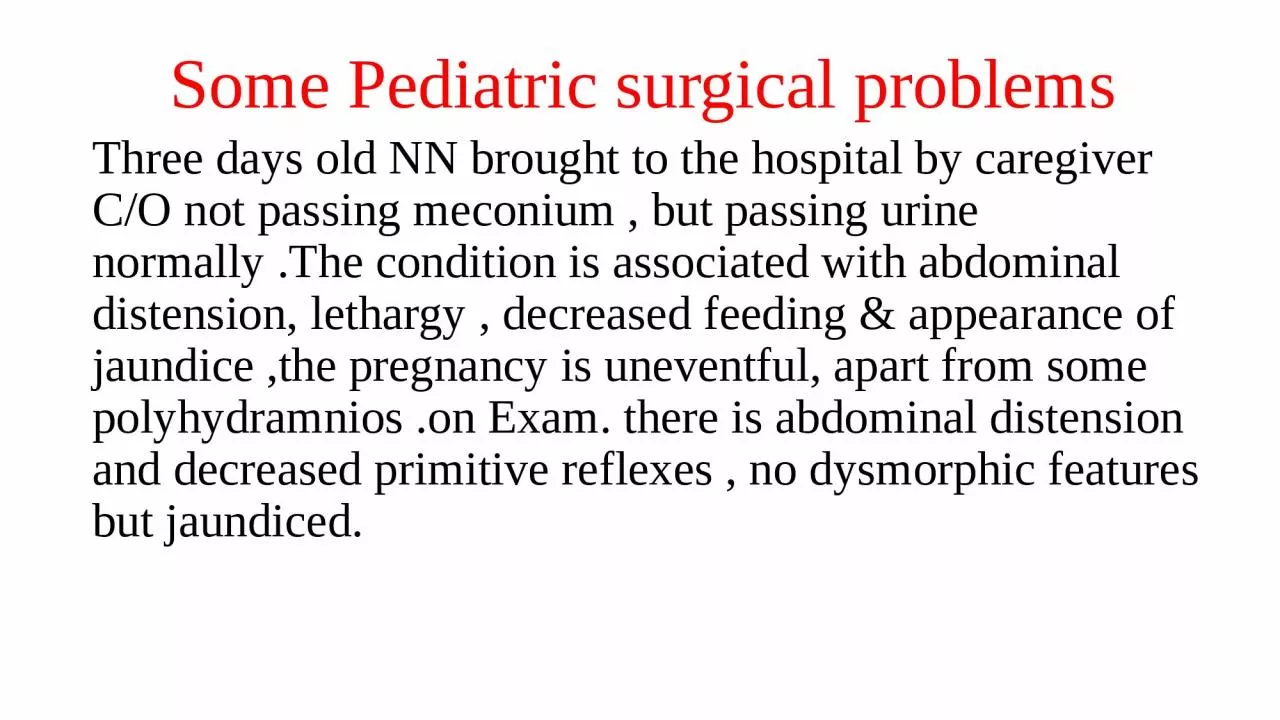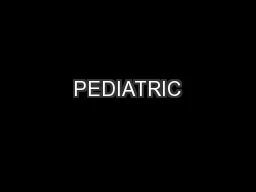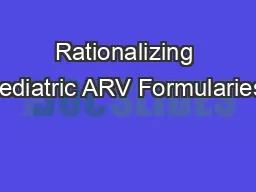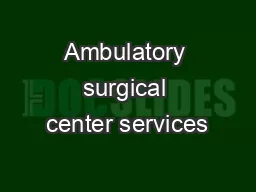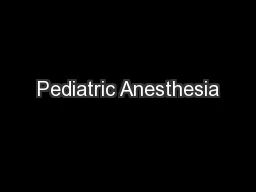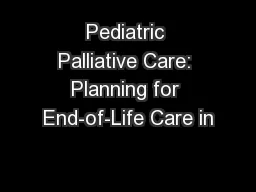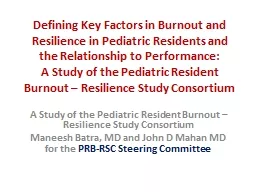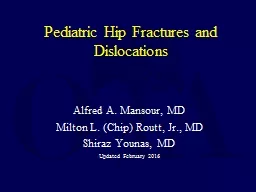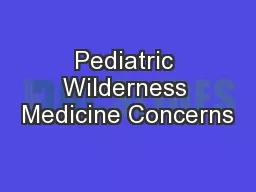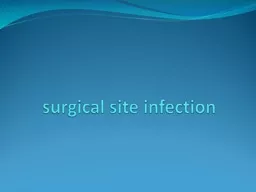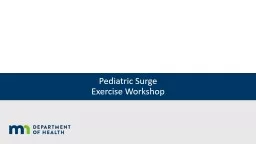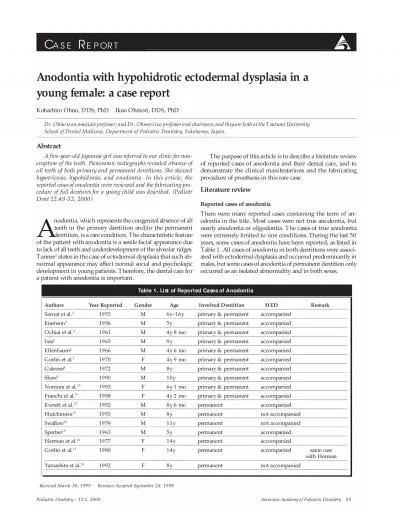PPT-Some Pediatric surgical problems
Author : lauren | Published Date : 2023-12-30
Three days old NN brought to the hospital by caregiver CO not passing meconium but passing urine normally The condition is associated with abdominal distension
Presentation Embed Code
Download Presentation
Download Presentation The PPT/PDF document "Some Pediatric surgical problems" is the property of its rightful owner. Permission is granted to download and print the materials on this website for personal, non-commercial use only, and to display it on your personal computer provided you do not modify the materials and that you retain all copyright notices contained in the materials. By downloading content from our website, you accept the terms of this agreement.
Some Pediatric surgical problems: Transcript
Download Rules Of Document
"Some Pediatric surgical problems"The content belongs to its owner. You may download and print it for personal use, without modification, and keep all copyright notices. By downloading, you agree to these terms.
Related Documents

